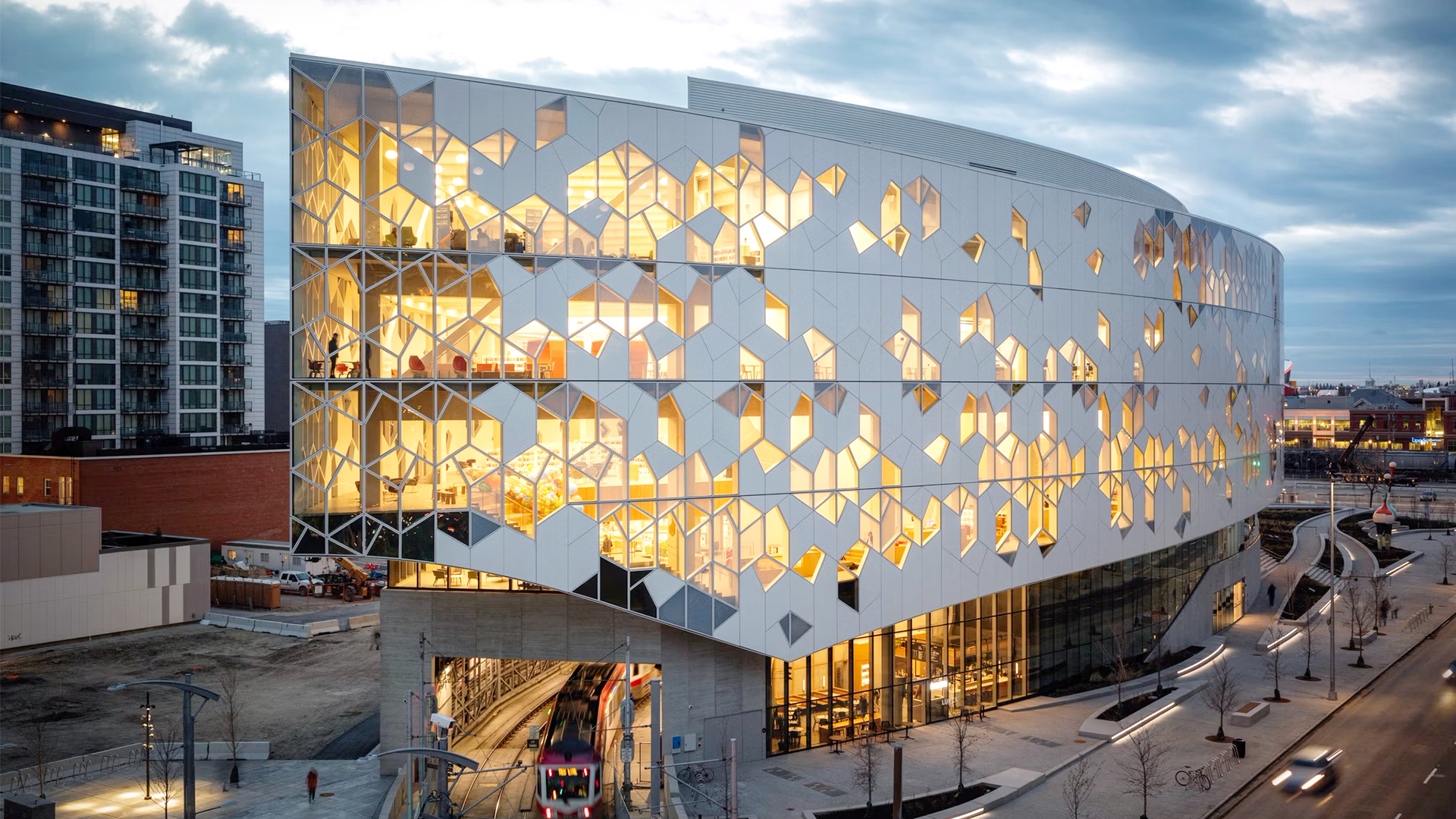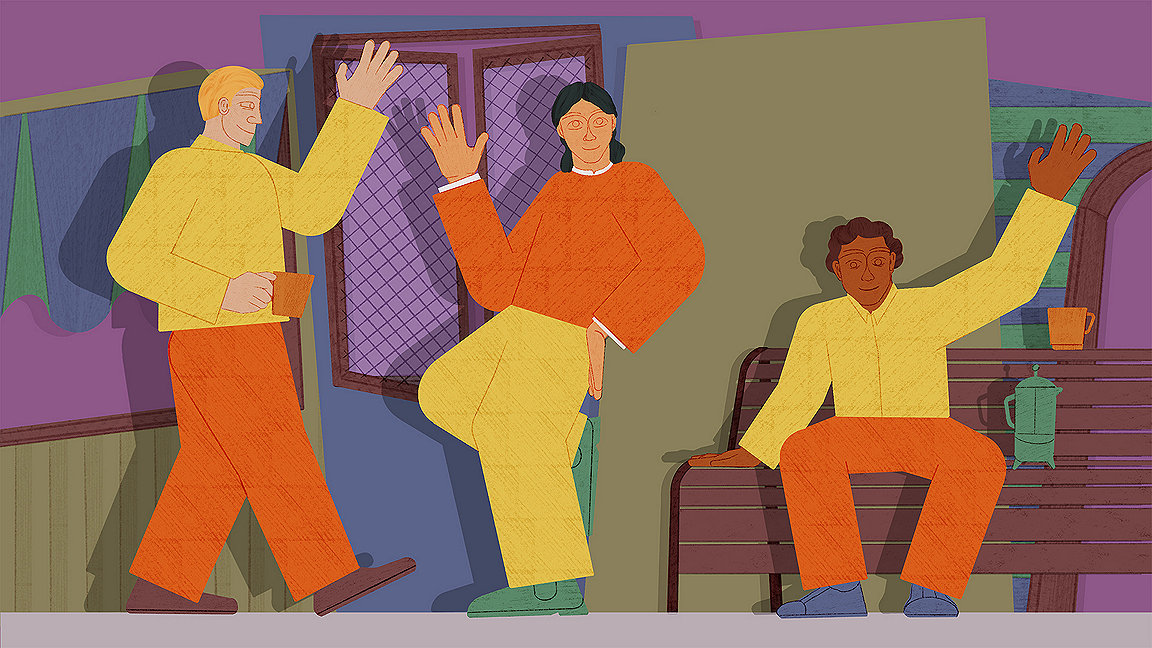
Illustration by Poan Pan
“What suburbia cries for are the means for people to gather easily, inexpensively, regularly, and pleasurably – a 'place on the corner,' real life alternatives to television, easy escapes from the cabin fever of marriage and family life that do not necessitate getting into an automobile.”
That’s how the American writer and sociologist Ray Oldenburg described the importance of communal spaces in his 1999 book The Great Good Place. While Oldenburg’s view of marriage may not ring true for everyone, he spent a lot of time thinking and writing about the value of informal public gathering spaces in US urban planning and placemaking.
Oldenburg coined the term ‘third place’, with home and work considered the first and second places. A third place is usually a publicly accessible location where social interaction can happen, such as parks, libraries, and churches. These are all locations where people can spend time without spending money, although many interpretations of the third place also extend to cafés, bars, gyms and even shopping centres.
The COVID-19 pandemic and its associated lockdowns temporarily killed off the third place, but it has made a very necessary comeback. However, the prevalence of third places was under threat long before the pandemic, as demonstrated by an article Oldenburg wrote in 1996, entitled ‘Our vanishing third places’ for the Planning Commissioners Journal.
"Life without community has produced, for many, a lifestyle consisting mainly of a home-to-work-and-back-again shuttle,” said Oldenburg. “Social wellbeing and psychological health depend upon community.”
A range of socio-economic factors have been chipping away at our third places. For example, accessible and inclusive public venues are often the victims of financial constraints or changing attitudes and approaches to socialising. Yet welcoming and inclusive spaces continue to be incredibly important for those who might feel uncomfortable elsewhere.
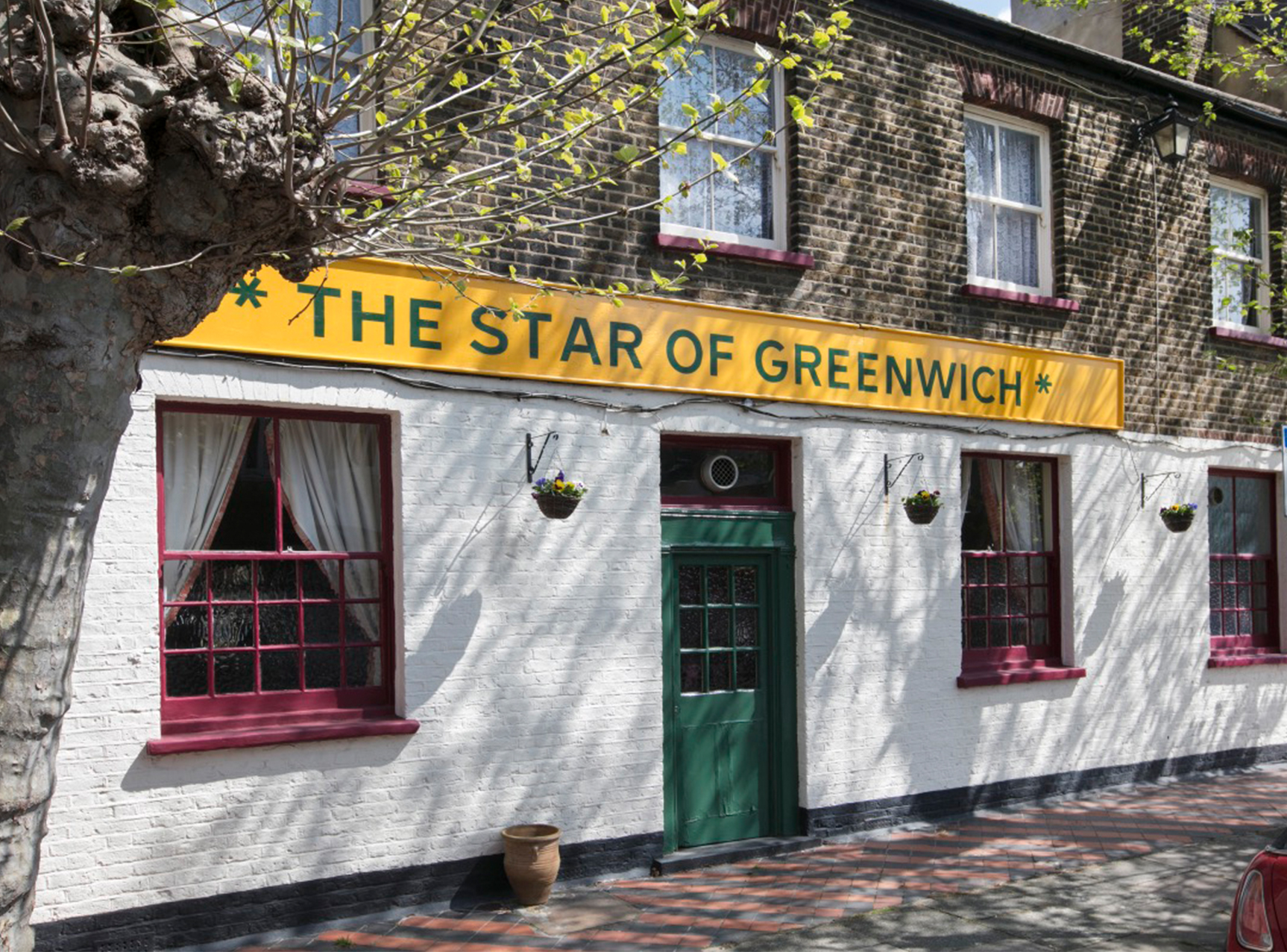
The Star of Greenwich pub (image credit: Paul Scannell Photography)
A loneliness epidemic
Earlier this year, Bloomberg declared a “loneliness epidemic” in the US, as Google Trends had reported that searches for ‘how to make friends,’ ‘where to make friends,’ and ‘where to meet people’ had reached an all-time high. The article went on to describe how loneliness or isolation can have significant mental health impacts, as well as physical health problems including heart disease, stroke and dementia.
Although the idea of a loneliness epidemic seems a bleak state of affairs, James Gadsby Peet, co-manager of community-owned pub the Star of Greenwich has a different take: “For me it’s more encouraging than worrying – people clearly want to meet other people.”
Creating a place where people can do exactly that was the driving force behind his decision to re-open a south London pub that had shut its doors after more than 200 years of service to the community. He went to the landlord with a plan to make it more than a pub. “The top line of our business plan was to create interactions between people that wouldn’t happen otherwise,” says Gadsby Peet. “It’s about making a third place first and a pub serving alcohol second.”
Gadsy Peet and his partners in the venture, Kirsty Dunlop and Lisa Donohoe, saw the community value in the venue and engaged with local residents early on in the process. “We had a neighbours meeting which became a neighbourhood meeting – we dropped six flyers round to the houses directly next door, which said we’d like to say hello. Then word got out and about 70 people turned up, asking about our plans. It was quite intimidating at first but ended up demonstrating how much people really care about a place like this.”
If there is any doubt that the pub is the traditional third place of the UK, look no further than another venerable institution, the TV soap opera. Eastenders has the Queen Vic, Coronation Street has the Rovers Return and Emmerdale has the Woolpack. All provide hubs around which local life revolves and drinks are sipped while the fictional drama unfolds.
Third places in different countries are often culturally specific – think cafés in France, barbershops in Brazil and the thermal baths of Hungary. In Finland and Estonia, the sauna culture is so strong that it has made the UNESCO List of Intangible Cultural Heritage.
Back in south London, in addition to its standard pub duties of providing a place to have a drink and a conversation, the Star of Greenwich runs ‘stay and play’ sessions for parents with children during the day. It also works with local charities on projects such as English language lessons for refugees and lets local interest groups use its rooms for meetings.
“We have the space, which is often what these groups are lacking, says Gadsby Peet. “You don’t have the local village hall in London. We have three or four spaces people can use and we don’t charge people for them.”
A stark example of what happens when you build a town with no community facilities can be found in Northstowe, UK. It has been described as a town “with no heart” by one of its own residents. What is supposed to become a town of 10,000 houses with 26,000 residents is currently 1,200 homes, three schools and little else. None of the facilities such as a community centre or sports pavilion have yet been built. Another resident said it’s a “dormitory town – there’s nothing to do here apart from sleep.”
“Our business plan is about making a third place first and a pub serving alcohol second” James Gadsby Peet, Star of Greenwich pub
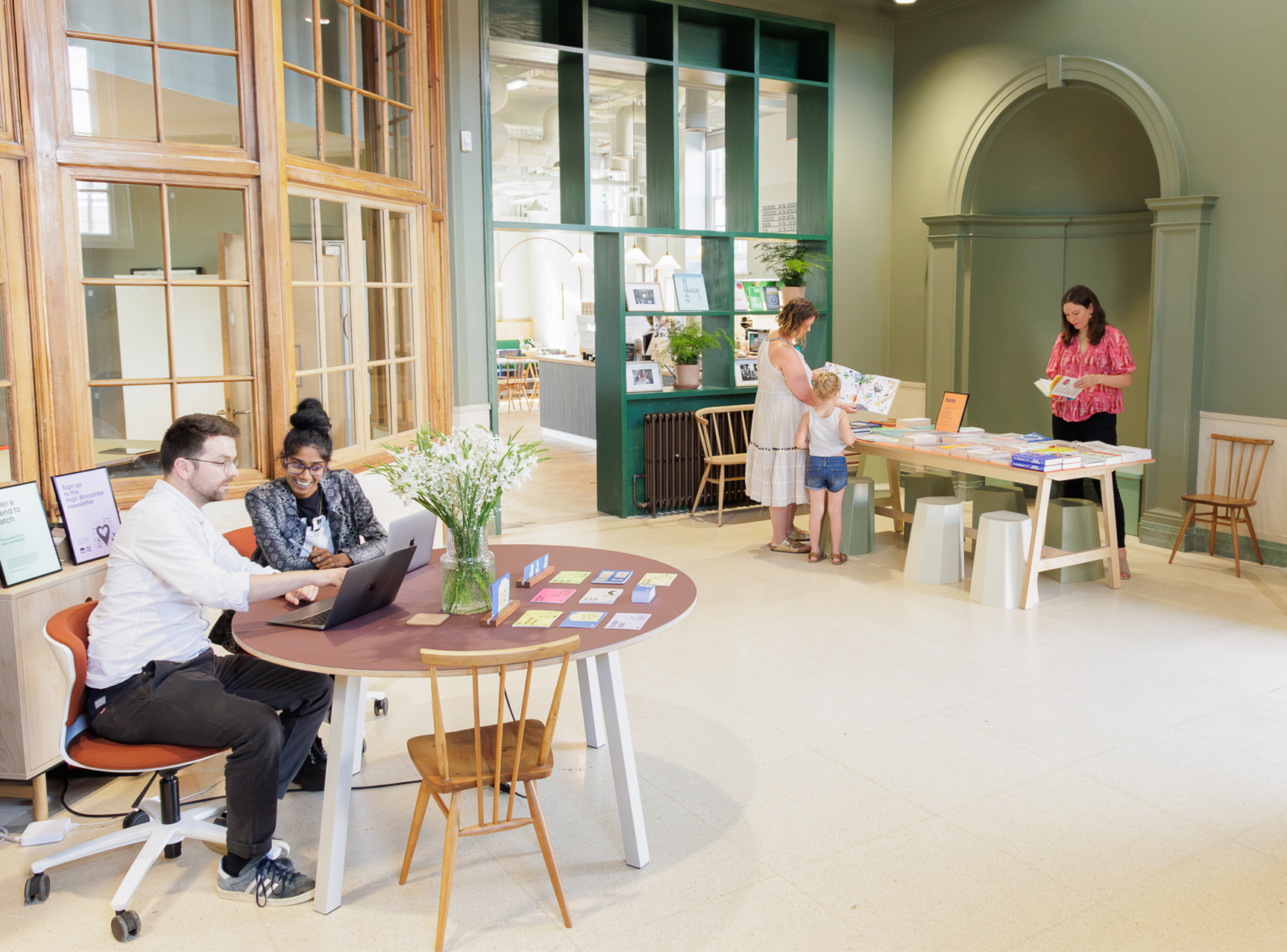
Patch workspaces
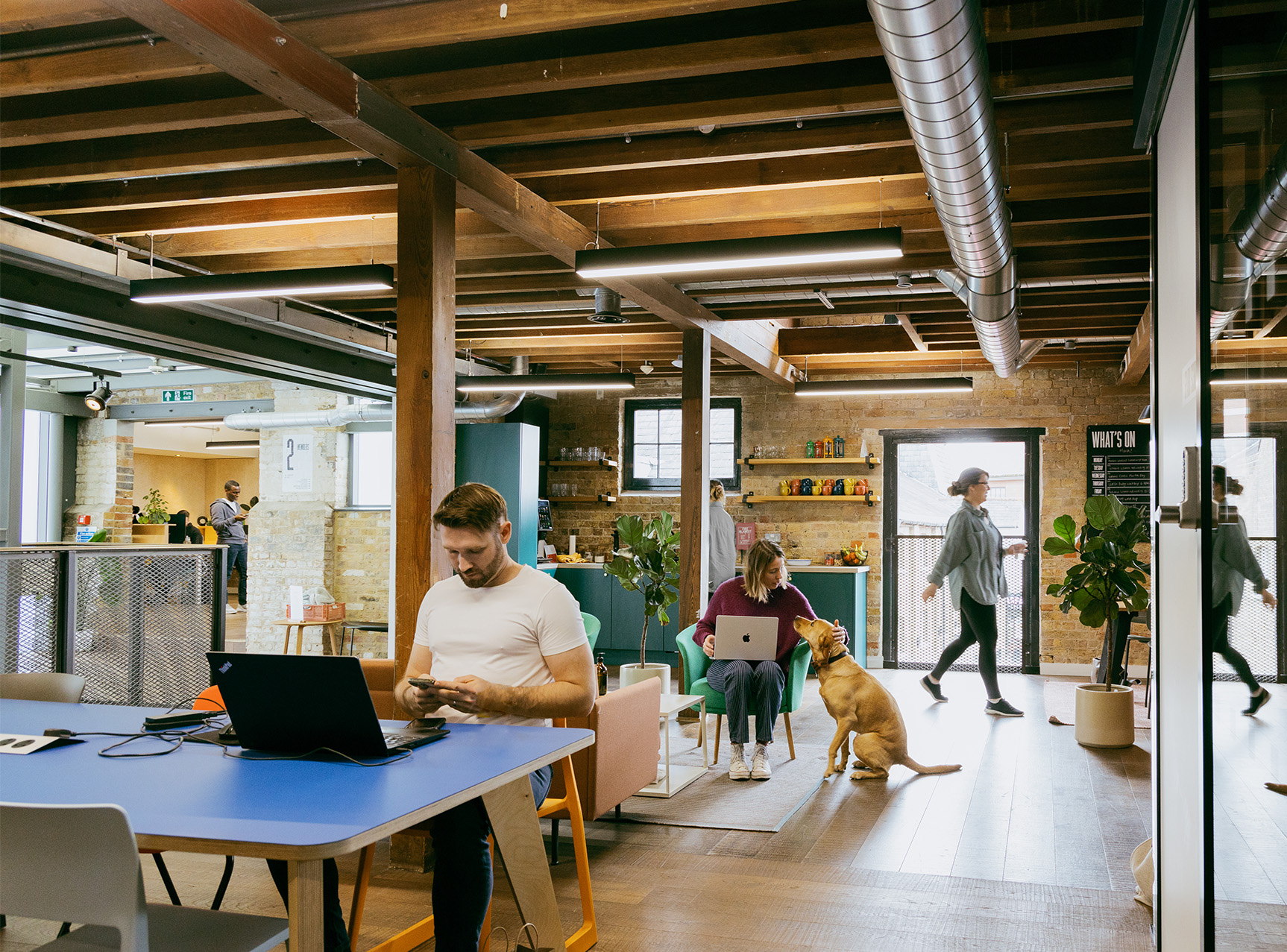
Work near home
Although work is considered separate from the third place, a UK business called Patch is blurring those boundaries. It is creating workspaces on UK high streets that can also be used by the local community, with an ethos of ‘work near home’.
“Commuting is stressful, time consuming and expensive,” says Freddie Fforde, founder of Patch. Instead, we are located in residential communities, where members can reinvest their commute in their mental and physical wellbeing, in their local economy and with their families and friends.”
“All of the indicators show that we are not returning to the office as we had before. Be that in occupancy data, attendance data or public transit records, all are about 30% to 40% down and have been flat for about 12 months now. This is consistent across most major cities.”
Like Gadsby Peet, Fforde recognises that one thing many local organisations lack is the space in which to meet and so they offer space to those groups.
“All of the indicators show that we are not returning to the office as we had before” Freddie Fforde, Patch
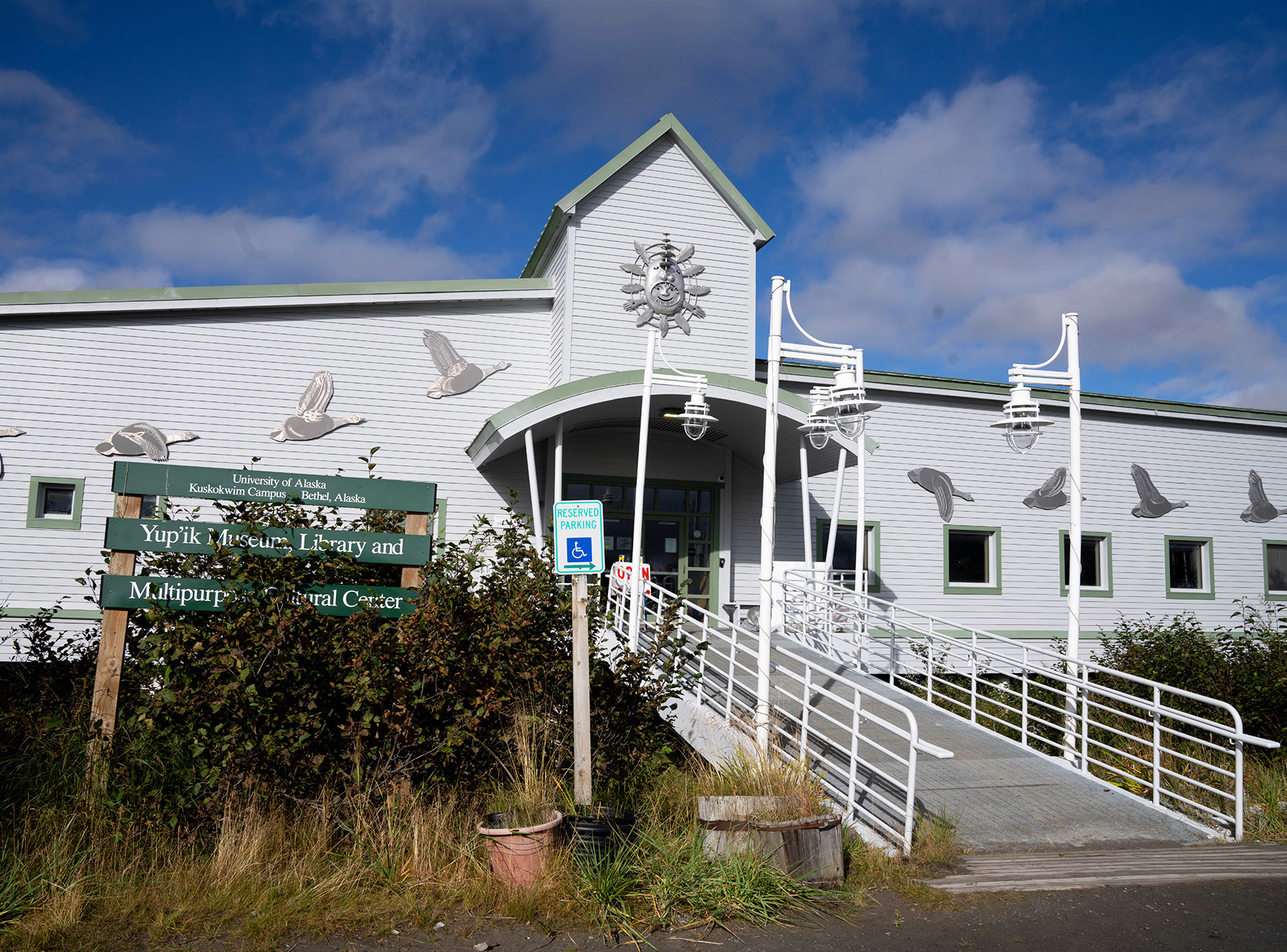
Kuskokwim Consortium Library (photo credit: MaryCait Dolan, KYUK)
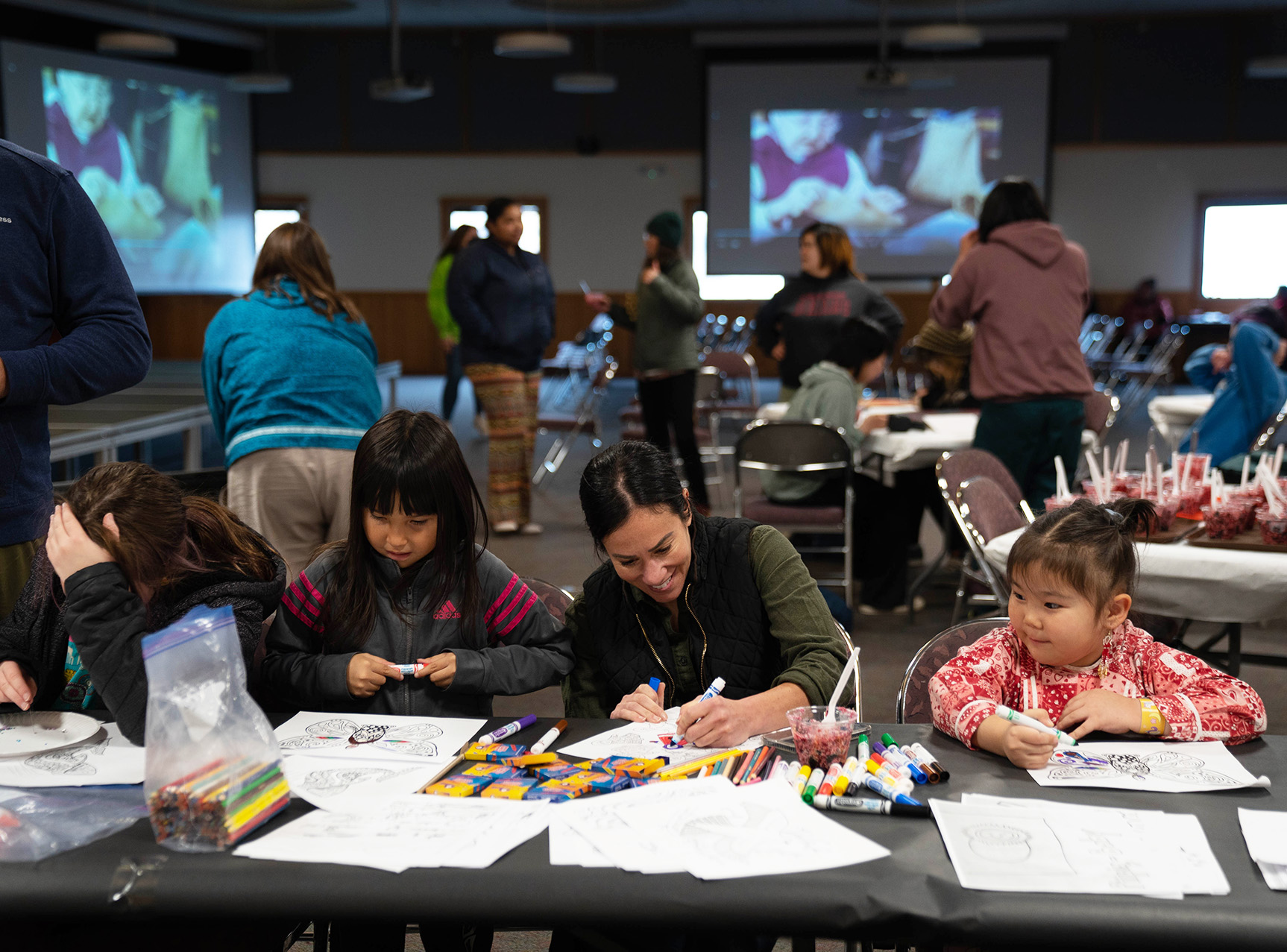
Lifesaving libraries
Across the Atlantic and then across most of North America too, is a remote town called Bethel, Alaska. Its Kuskokwim Consortium Library recently won a National Medal for Museum and Library Service, which highlighted just how important libraries are as third places to the people they serve.
“We have a community of people experiencing homelessness here, and in the winter it gets to 30-40 degrees below zero Fahrenheit on a regular basis,” says the library’s director, Theresa Quiner. “The homeless shelter is only open nights and for limited winter months. As a result, the library is the de facto homeless shelter during the day, which literally saves people from dying from exposure.”
Quiner believes libraries are the “premier example” of third places and should provide a variety of services to its local community. “Unlike most businesses or other public spaces, there is no obligation to spend money when you visit the library,” says Quiner. “You can visit the library with a specific purpose or task, or you can come in just to hang out. Libraries are set up as welcoming and comfortable spaces, and ideally are designed to serve multiple purposes.
“In every library that I have worked in, many people who are marginalised in some way (disabled, elderly, lonely, experiencing homelessness, an unstable home environment) rely a great deal on the library as the only place where they know they will be welcomed and treated with respect. ”Like Gadsby Peet, Fforde recognises that one thing many local organisations lack is the space in which to meet and so they offer space to those groups.
Among the library’s many programmes tailored for local residents are those that celebrate indigenous culture. “Our community is 65% Yupik Eskimo and the Yugtun language is commonly spoken in the home,” says Quiner. When new books about the culture are published, community discussions with authors and anthropologists are held. And every October there’s an Indigenous Peoples’ Day celebration, which includes culture bearers leading ethnobotany walks on the tundra.
While having speedy wi-fi at home is taken for granted by many people, this isn’t a universal truth and Quiner says libraries “are at the forefront of digital equity issues,” providing free access to computers and the internet for those who cannot afford it otherwise.
In a town with a population of 6,300 that is located closer to eastern Russia than much of the US, accessible third places aren’t as common as in larger urban areas.
“We don’t have a lot of public spaces like parks, coffee shops or museums,” says Quiner. “Almost every community event and celebration, from weddings and funerals to craft markets happens in our space because it is one of the only places where large groups of people can gather.”
The Star of Greenwich in south London and the Kuskokwim Consortium Library in Alaska share a common purpose – while a pub and a library seem like very different places, they are offering local people a welcoming place to spend time that is not home or work. They serve their communities and welcome people from all walks of life.
As Gadsby Peet says of the Star of Greenwich: “We’re not going to change all the local problems with somewhere like this, but if you can chip away it’s got to be better than nothing.”
“In every library that I have worked in, many people who are marginalised in some way rely a great deal on the library” Theresa Quiner, Kuskokwim Consortium Library. Photos by MaryCait Dolan

